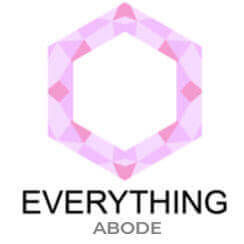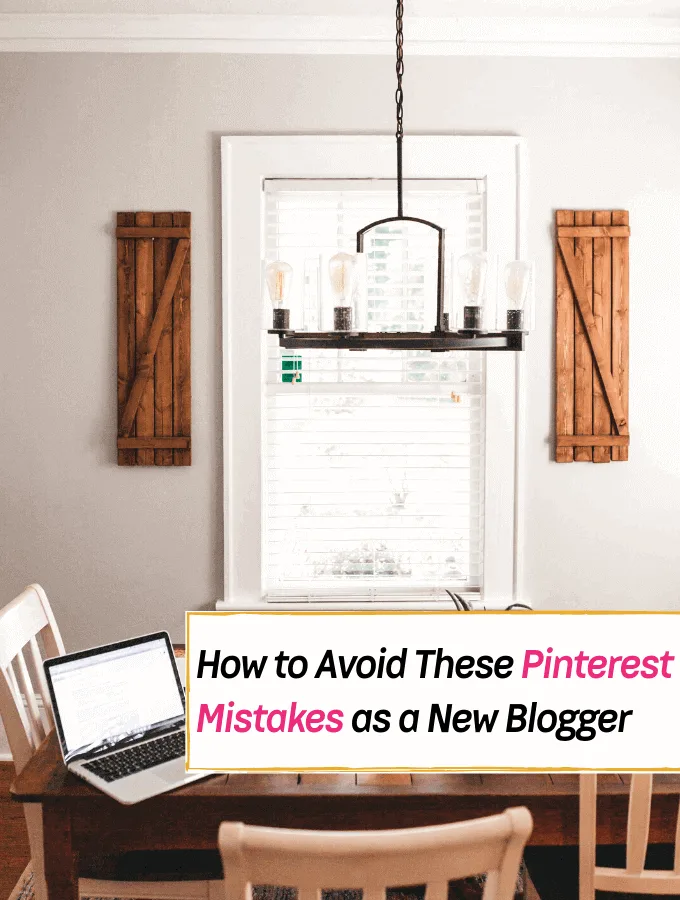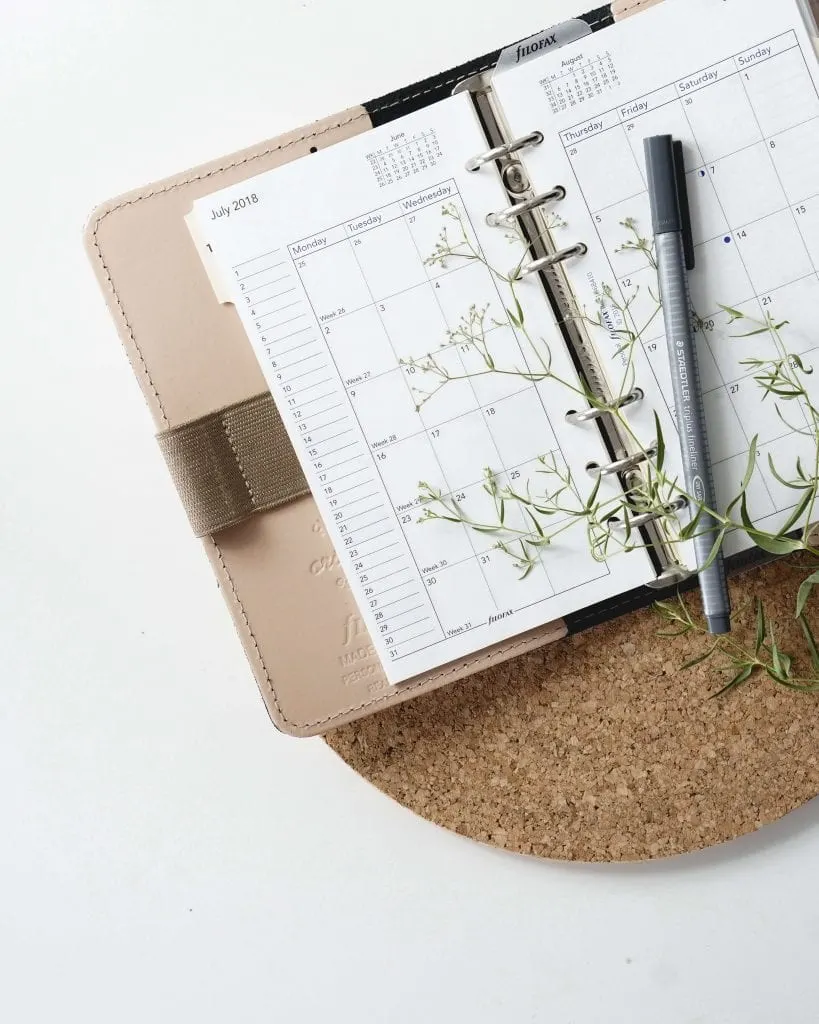Are you finding Pinterest a lot to handle these days?
If so, you’ve come to the right place. This post contains the top 7 mistakes most bloggers make when using Pinterest to grow their blogs.
In fact, some don’t even know that they’re doing them!
But before we start heading into the land of Pinterest mistakes…
You will need to have the following to have the best success rate with your Pinterest strategy:
1. Have a Pinterest Business account. Having a Pinterest business account will allow you to see analytics of how well your pins are doing, (and this insight is very important!)
2. Have Rich Pins already enabled. Rich pins pull extra information from your blog to add more information to your pins. This helps let Pinterest know what your pin is about. (super important!)
3. Have a Blog that is ready to market on Pinterest. Pinterest is the best platform for blog traffic, so if you are learning about Pinterest mistakes even before you have a blog? Then your chances for your soon-to-be-blog to get lots of traffic has already increased.
Now, if you are presently marketing your blog on Pinterest? Let’s uncover the biggest mistakes most bloggers make when they are trying to work with the Pinterest algorithm.
Similar Topic:
{this post contains affiliate links, please see disclosure for details}
Important note!!
One thing first, before we dive into the list! If you don’t have any of the three listed above, that’s totally fine because you can always change that! I have an easy step-by-step guide on how you can set up your WordPress Blog in a few minutes here! And if you would like your web hosting for only the price of a small cup of coffee a month, you can go and set up your blog and hosting through my special link here.
7 mistakes to combat the Pinterest algorithm
1. Don’t mistake Treating Pinterest as a social media platform.
The first mistake a lot of people make with Pinterest, is that they treat Pinterest, as just another social media platform when in REALITY it is actually a search engine.
Pinterest’s algorithm is called a smart feed and that smart feed determines what a user sees in their Pinterest home feed by search engine results.
That means, whenever someone does a search on Pinterest, Pinterest is going to use its smart algorithm search feed to try and find the best and most suitable PINS to rank it first.
How it does this is pretty similar to Google’s search engine. It ranks pins by using popularity (how many repin’s and engagements it’s had), it uses keywords (much the same as Google’s search for meta tags within articles), and for those reasons, it’s more like a search engine than a social media platform.
What a lot of people do, which is a huge mistake, is they treat Pinterest like just another social media platform.
They log onto Pinterest sporadically, they occasionally post as they would with their other social media accounts (like Instagram and Facebook) and hope that their pins get seen because they pinned something.
But that is a huge mistake!
And if you are just getting to know what Pinterest is all about and would like to make money from pinning and have loads of traffic to your blog?
Know that using Pinterest as a search engine as a means to get traffic back to your blog, is what bloggers need to REALLY learn how to do.
Once you understand this, then implementing it every single day is vital for any success!
2. Not optimizing Pinterest pins to their fullest potential.
Okay, now that you know that Pinterest is more like a search engine, it’s time to get your pins seen more often.
Let’s face it, our main goal is to get our pins to the top of the search algorithm and the best way to do this is that you HAVE to learn how to optimize your pins correctly. If you do this, then you bet, that you can get your pins seen by thousands of potential readers, thus bringing back more Pinterest traffic to your blog.
Here’s a few key details that can optimize your pins by doing the following:
- Use long-tail keywords in your descriptions and titles, (this is usually 4 to 8 words, and is a sentence that pinners would already type into the search bar). I’ve been using my title from my blog posts, which also match the article’s permalink, and it’s working great for me!
- Have catchy clickable titles. This entails having a need or desire or an ‘I have to know the answer to this!’ in order for people to make a quick emotional response to your pins.
- Having great pin design templates. This is a no-brainer, but I find that less is more!
- Using the right pin dimensions at a 2 to 1 ratio.
- Pinning consistently and to the right Pinterest boards.
A good thing to know: A user’s feed is not chronological!! A user’s feed displays “best first” (not “newest first”). So when you are searching using the Pinterest search bar? Pinterest will be showing you the pins that match your keywords (what you searched for) and the pins that have the most repin’s within those keywords.
3. Not staying consistent.
Okay so now you know Pinterest is a search engine, and it likes your pins a certain way when pinned…
Now let’s talk about consistency!
In order for Pinterest to help you, you have to help it. That’s why consistency is so vital to your success. Pinterest wants to promote people’s content that they feel provides value to the user.
So one way Pinterest can track how valuable content is is how much engagement your account is getting, like repins, reshares, and growing your audience. Pinterest also tracks how frequently you are signing in, how often you are pinning, so that’s where consistency comes into the equation here.
If you are manually logging into Pinterest every single day and pinning consistently, Pinterest is going to recognize this consistency as being an active pinner and reward you for it by ranking your pins to the top of the search feeds.
If you want to get recognized, then manually pinning is the best way to show Pinterest that you LOVE their platform.
4. Not focusing on quality.
The next point that Pinterest wants more of is quality. Pinterest is no different than all the other platforms we are using these days like Instagram, Facebook, or even Google.
These platforms and algorithms are always going to be focusing on quality content first! So, when it comes to Pinterest, their bottom line for loving you and your pins will always be quality which means are your pins getting good engagement or not.
Pinterest is a powerful search engine, just like Google and the smart feed that Pinterest has within its platform is getting even smarter.
The smart feed is cracking down on accounts that are uploading low-quality content and spammy content and any activities that are seen to be ‘gaming’ the algorithm (like spamming the same content over and over or manipulating the feed or purchasing followers or unfollowing massive amounts of followers), will give them the cue that your account isn’t worth showing to others.
Quality also means the type of content (your keywords) that all your pins have in common. Is your blog’s main idea being told within the pins that you pin to your account? This is what you need to keep in mind when you are even resharing other people’s pins. Basically, it is super important to focus on quality first and steadily increase your following, organically.
5. Not creating a pinning schedule.
Did you know that ‘quality pinners’ and their content are more often favored by the Pinterest Smart Feed, then-newbie bloggers? I know it’s totally unfair, but the more work you do, the more feeds you’ll get in.
That’s why it’s even more important to get into the habit of pinning consistently by establishing and creating a great pinning schedule.
Just like the previous mistake with not being consistent or not keeping quality in mind, not having a pinning schedule will also hurt your chances of having your blog seen or even visited.
Most top pinners have invested in a software tool such as Tailwind to manage this for them. This helps them pin consistently and often (up to 50-80 times per day, mixed with their tribemates pins!).
Having a scheduling tool is really the best way for your pins to have a better chance of getting to the top of the search feeds for potential clicks and views back to your blog. This is really something that you really can’t have in order to grow your blog’s traffic using Pinterest!
6. Using shortened links or any links in your pin descriptions & URL area.
Okay, this is a weird tip but if you are planning on using affiliate marketing with Pinterest, then you need to know what to do. I go into detail, on how you can make actual money with affiliate marketing on Pinterest and I’ll link that for you here.
But in short, if are you shortening your links in your pin descriptions and link area? Stop!
Do not use Bit.ly or any other URL shorteners in your pin’s descriptions or URL area. The reason for this is that Pinterest sees this as “spammy”, and you’ll get your account suspended.
An easy way to get around this is to make sure that your pin links are all correct and normal, and that they all point to the right blog post or product.
And if you are affiliate marketing on Pinterest, try to state that it’s an affiliate pin in the description so you again, don’t look spammy! Read this if you are not too sure what I am talking about or if you would like to learn how to make money on Pinterest through affiliate marketing!
7. Not using vertical pin dimensions or high-quality images.
Now, one of the MAIN keys to getting ranked high in the Pinterest smart feed is by using eye-catching images (when you are creating your pins), along with super easy to read pin elements.
It’s best to follow these three mainstream rules:
- Don’t combine multiple images for a pin as it will end up looking too busy! I think multiple images in pins are only great for roundup posts and that’s it. Also, if you are using multiple images and it’s clean, with a clear layout, then test it to see if it works! There is no shame in trying. Pro tip: I pin many different styles, solely for the reason to see what gets the most reshares.
- Make sure the pin has a singular theme overall (a few colors).
- Follow the best pinners to stay inspired and keep tweaking your own pins until your design skillsets grow!
Another way is to make sure that your pin does well is to make sure your pin dimensions are vertical, rather than horizontal with an aspect ratio of 2:3 with the maximum width being 600 pixels (any more than that and it’ll get cut off in the feed).
Horizontal pins take up more internet ‘real estate’ than compared to the vertical pins on Pinterest. Pinterest has to keep everything vertical to help keep its search engine user-friendly. If Pinterest says not to use horizontal pins or pictures, then don’t!
Pinterest says a pin of 600 x 900 pixels is usually a perfect size. But I personally use 564px x ____ and it’s been working really great for me! That’s right! I don’t have a fixed length, I only use 564px for my pins width. 🙂
There are so many ways to go about Pinterest, but these mistakes seem to be the most popular. So, if you spotted any of the above mistakes that you are currently doing? Then change your strategy!
Also, don’t forget to take the Tailwind free trial HERE if you haven’t, and if you have any tips or questions, please leave a comment and I’ll be happy to help you out!
Also, IF you interested in boosting your Pinterest Traffic? Then make sure to check out this post HERE to get more traffic from Pinterest! (It’s a great read!)
You may also like:
Author: Everything Abode
Welcome to Everything Abode, your daily inspiration for every activity at home!
Our goal is to inspire you to live an elegant and chic lifestyle from the comfort of your home.
We’ll help you express yourself through authentic style, aesthetic beauty, and stylish home decor.
Subscribe to Get the Tools That Make My Blog Successful!

When you join my newsletter, I'm going to send you insider advice and tools that I use to grow my blog! I only save the BEST for my email list so don't wait!







eLEGENT eLATION
Monday 29th of April 2019
Ahhh, thank you SO MUCH! I WAS DEFINITELY USING PINTEREST MORE LIKE A SOCIAL MEDIA PLATFORM. I RECENTLY STARTED A BLOG, SO AM LOOKING FORWARD TO READING MORE OF YOUR ARTICLES. cHEERS!